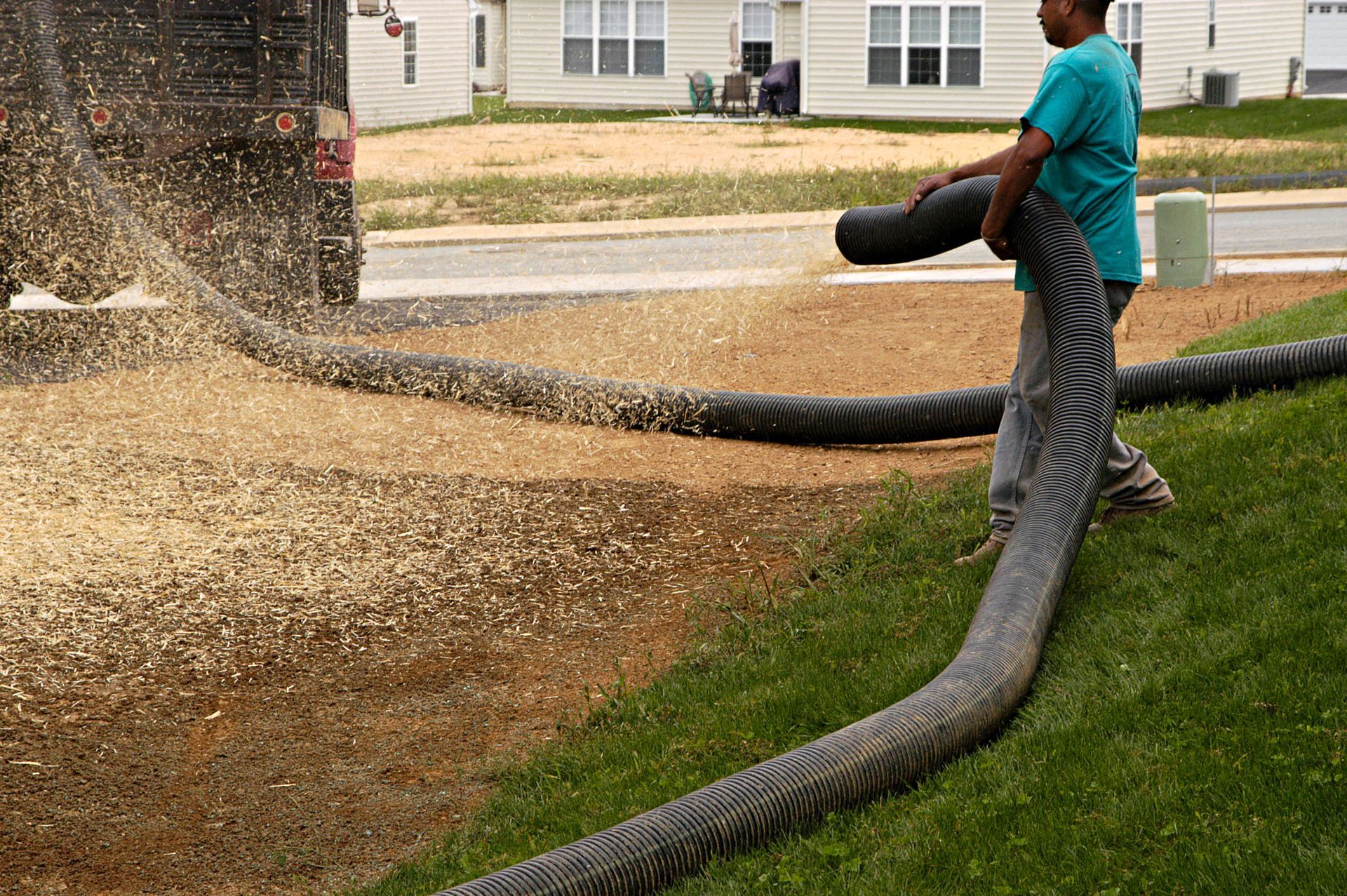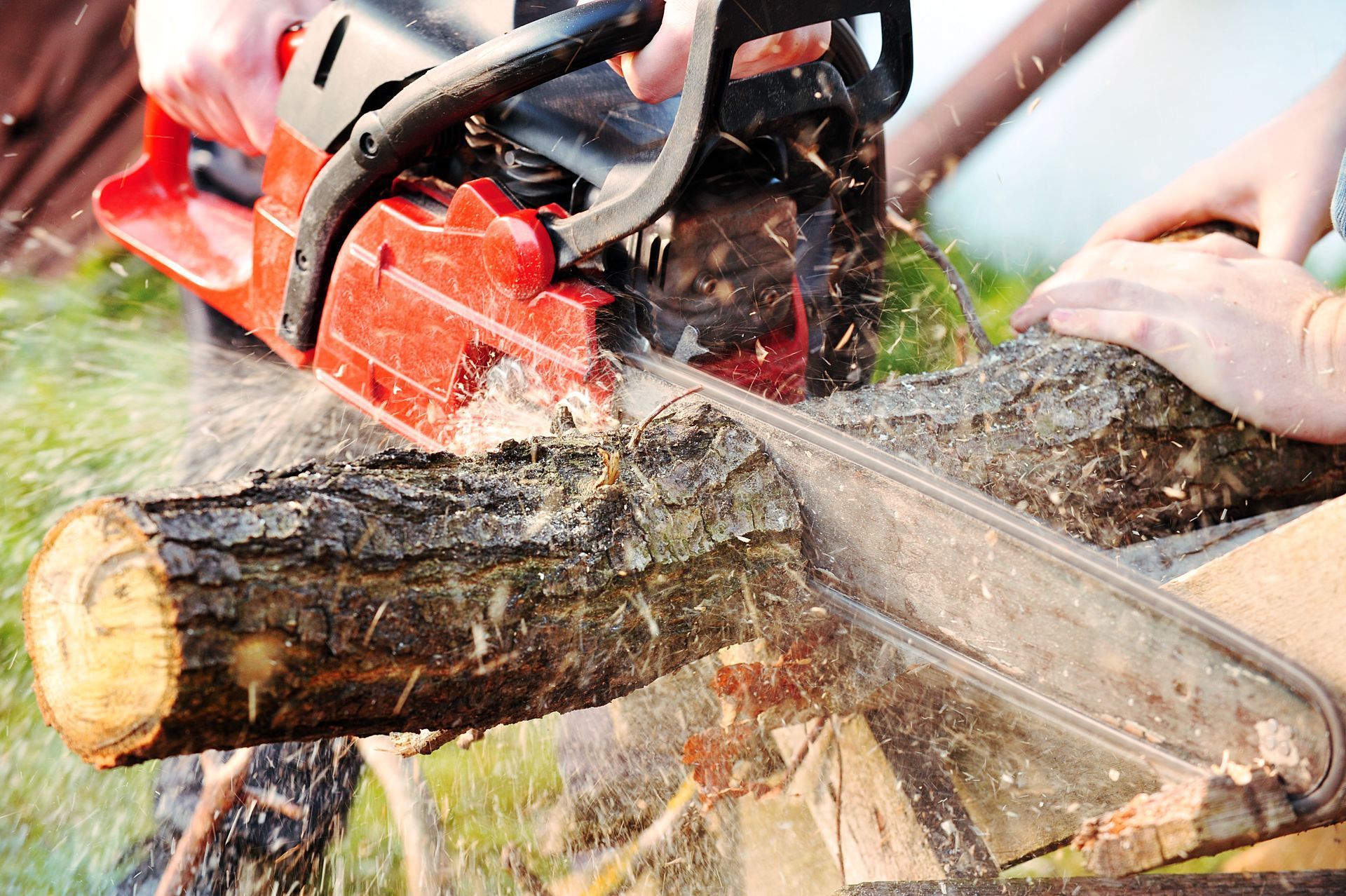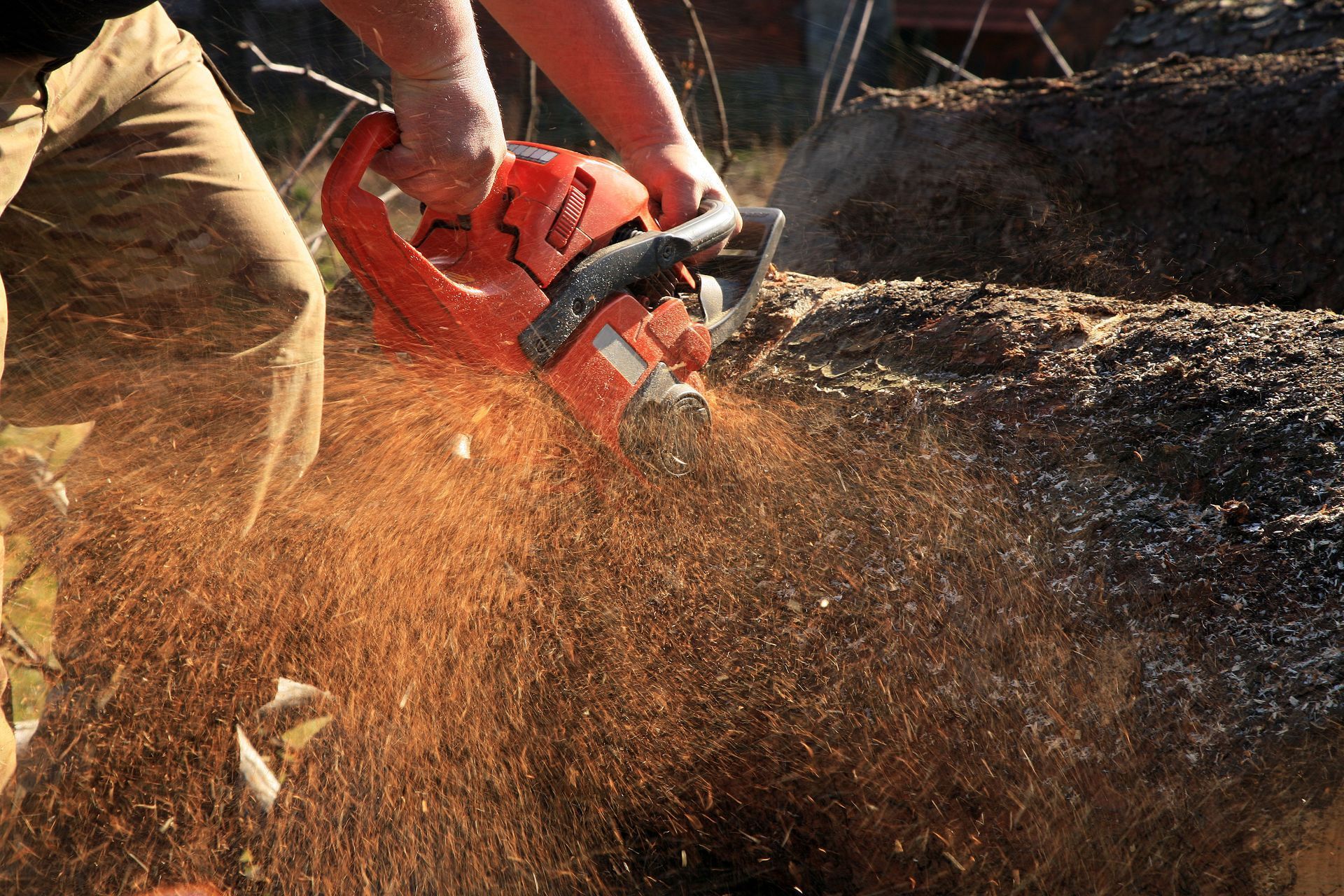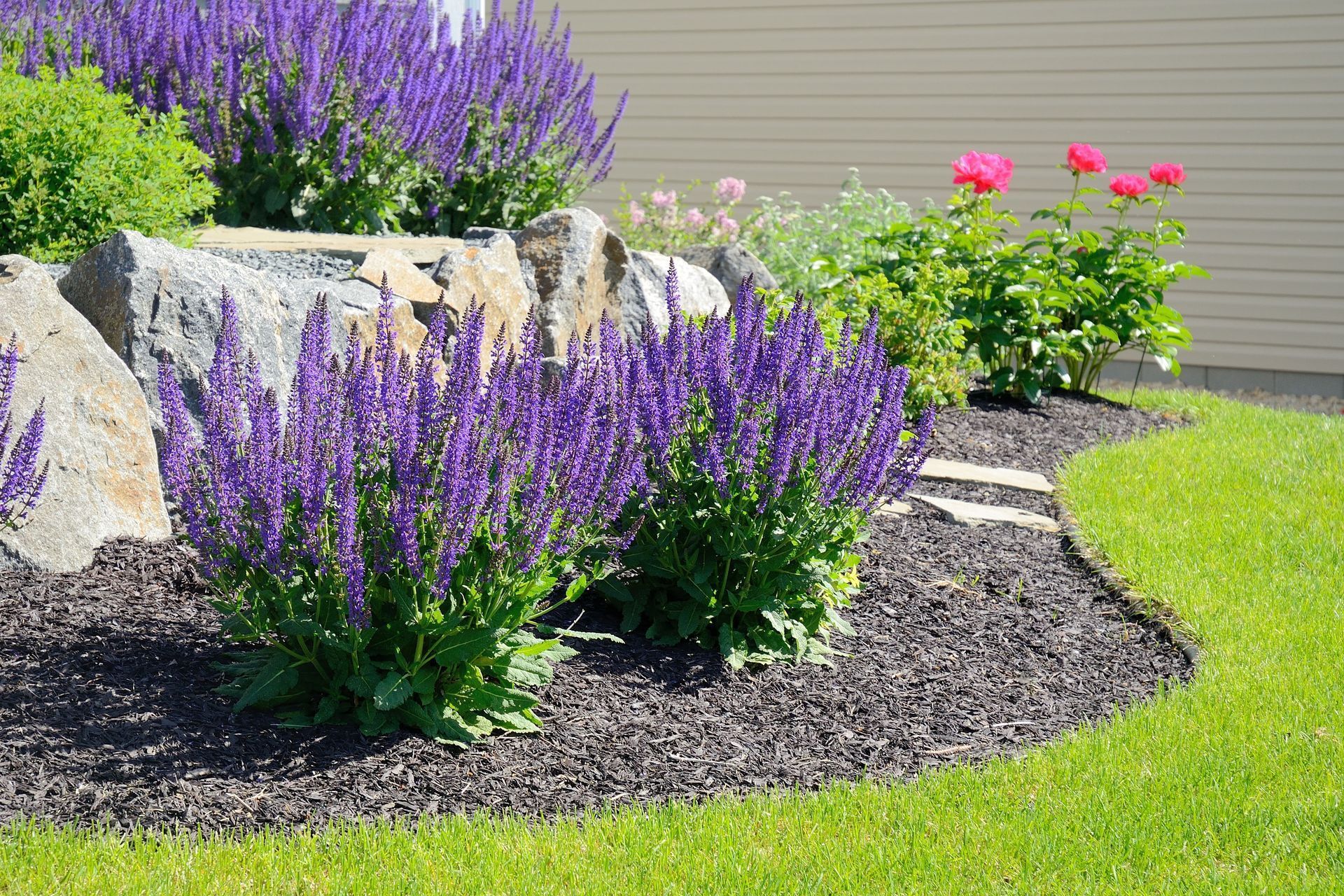August 4, 2025
Mulching is more than just a finishing touch—it’s a critical step in building a thriving, low-maintenance garden. Whether you're enhancing soil health, conserving moisture, or simply elevating the visual appeal of your landscape, mulch plays a pivotal role in achieving long-term success. According to Fact.MR, the North American mulching material market size was estimated to be US $850.4 million in 2024, illustrating a robust demand for mulching materials. But with so many options and techniques available, understanding how to choose, prepare, and apply mulch properly can make all the difference.
1. Protecting Seasonal Plants
Mulch does more than enhance the look of your garden—it acts as a natural insulator, helping plants withstand seasonal extremes. In colder months, mulch shields roots from freezing temperatures and reduces frost heaving caused by cycles of freezing and thawing. During the summer, it helps retain soil moisture and keeps root zones cool, preventing heat stress and reducing the need for frequent watering.
The effectiveness of mulch as a temperature regulator makes it especially valuable in regions with unpredictable or harsh weather. A well-applied mulch layer can extend your growing season by stabilizing soil conditions, allowing plants to thrive longer into spring and fall. For perennials and sensitive plants, this added layer of protection can be the difference between surviving winter and needing costly replacements come spring.
To get the most out of mulch for seasonal protection, our experts aim for a two to four-inch layer, and to keep mulch a few inches away from plant stems or trunks to prevent rot and pest issues. Whether you're preparing for winter or bracing for summer heat, mulch is a practical, natural tool to keep your garden healthy and resilient year-round.
Mulch does more than enhance the look of your garden—it acts as a natural insulator, helping plants withstand seasonal extremes. In colder months, mulch shields roots from freezing temperatures and reduces frost heaving caused by cycles of freezing and thawing. During the summer, it helps retain soil moisture and keeps root zones cool, preventing heat stress and reducing the need for frequent watering.
The effectiveness of mulch as a temperature regulator makes it especially valuable in regions with unpredictable or harsh weather. A well-applied mulch layer can extend your growing season by stabilizing soil conditions, allowing plants to thrive longer into spring and fall. For perennials and sensitive plants, this added layer of protection can be the difference between surviving winter and needing costly replacements come spring.
To get the most out of mulch for seasonal protection, our experts aim for a two to four-inch layer, and to keep mulch a few inches away from plant stems or trunks to prevent rot and pest issues. Whether you're preparing for winter or bracing for summer heat, mulch is a practical, natural tool to keep your garden healthy and resilient year-round.
2. Preparing Your Yard for Mulching
Effective mulching begins with a well-prepared garden bed, free from weeds and debris that might undermine its benefits. Before applying mulch, it's essential to clear the area of existing weeds, as they can steal valuable nutrients and water intended for your plants. Manual weeding, while time-consuming, ensures thorough removal, including root systems that could cause regrowth. Utilizing weed-killing products or organic herbicides can also aid in clearing stubborn or invasive species. This preparatory step is crucial to maximizing the efficacy of mulch, as it ensures a clean, receptive surface that inhibits future weed growth.
Debris removal is another key component of yard preparation, as leaves, fallen branches, and other organic matter can create an uneven mulch layer. Clearing debris allows for a smooth, uniform application, which is both aesthetically pleasing and functionally effective in retaining moisture and regulating soil temperature. Careful detection and removal of any plant diseases or pests in the debris will also minimize the risk of them spreading to healthy plants. By starting with a clean slate, mulch will adhere more effectively to the soil, providing a consistent barrier that supports your landscaping goals.
In addition to weeding and debris removal, consider soil aeration as part of the yard preparation process. Loosening compacted soil improves drainage and root penetrability, creating an optimal environment for mulch application. Tools such as a garden fork or aerator are effective in this task, allowing for minimal disturbance while promoting soil health. Pre-mulching preparations, though requiring effort, significantly enhance the landscape's sustainability, ensuring a long-lasting and resilient garden environment that takes full advantage of the benefits mulch provides.
Effective mulching begins with a well-prepared garden bed, free from weeds and debris that might undermine its benefits. Before applying mulch, it's essential to clear the area of existing weeds, as they can steal valuable nutrients and water intended for your plants. Manual weeding, while time-consuming, ensures thorough removal, including root systems that could cause regrowth. Utilizing weed-killing products or organic herbicides can also aid in clearing stubborn or invasive species. This preparatory step is crucial to maximizing the efficacy of mulch, as it ensures a clean, receptive surface that inhibits future weed growth.
Debris removal is another key component of yard preparation, as leaves, fallen branches, and other organic matter can create an uneven mulch layer. Clearing debris allows for a smooth, uniform application, which is both aesthetically pleasing and functionally effective in retaining moisture and regulating soil temperature. Careful detection and removal of any plant diseases or pests in the debris will also minimize the risk of them spreading to healthy plants. By starting with a clean slate, mulch will adhere more effectively to the soil, providing a consistent barrier that supports your landscaping goals.
In addition to weeding and debris removal, consider soil aeration as part of the yard preparation process. Loosening compacted soil improves drainage and root penetrability, creating an optimal environment for mulch application. Tools such as a garden fork or aerator are effective in this task, allowing for minimal disturbance while promoting soil health. Pre-mulching preparations, though requiring effort, significantly enhance the landscape's sustainability, ensuring a long-lasting and resilient garden environment that takes full advantage of the benefits mulch provides.
3. Edging and Defining Mulch Beds
Clearly defined mulch beds are essential for both aesthetic value and functional effectiveness in garden management. Edging involves creating defined boundaries between mulch areas and lawn or neighboring plant beds, preventing mulch from spilling onto grass or other undesired locations. Various materials can be employed for this purpose, ranging from plastic and metal edging to natural stone and brick. Each option presents distinct visual and maintenance advantages, tailored to the needs and preferences of your landscape design.
Establishing mulch bed boundaries offers practical advantages, such as preventing lawn encroachment into garden areas, reducing maintenance needs over time. It also provides a tidy, organized look that enhances the overall landscape design, contributing significantly to curb appeal. Edging tools or spades can be used to dig precise trenches, allowing for even and well-defined separations. These neat borders help retain mulch within designated zones, maintaining its intended benefits without mixing with adjacent surfaces.
Defining mulch beds also facilitates the maintenance of consistent mulch depth, crucial for optimal plant growth and weed control. Ensuring a uniform layer that is neither too thick nor too thin helps in preserving soil moisture and insulation without over-suffocating plant roots. Regular inspection and adjustment of mulch beds, paired with effective edging solutions, create an environment where both functional and visual appeal are maximized. Investing time in this preparation step lays the groundwork for stunning landscape results driven by a strategic mulching approach.
Clearly defined mulch beds are essential for both aesthetic value and functional effectiveness in garden management. Edging involves creating defined boundaries between mulch areas and lawn or neighboring plant beds, preventing mulch from spilling onto grass or other undesired locations. Various materials can be employed for this purpose, ranging from plastic and metal edging to natural stone and brick. Each option presents distinct visual and maintenance advantages, tailored to the needs and preferences of your landscape design.
Establishing mulch bed boundaries offers practical advantages, such as preventing lawn encroachment into garden areas, reducing maintenance needs over time. It also provides a tidy, organized look that enhances the overall landscape design, contributing significantly to curb appeal. Edging tools or spades can be used to dig precise trenches, allowing for even and well-defined separations. These neat borders help retain mulch within designated zones, maintaining its intended benefits without mixing with adjacent surfaces.
Defining mulch beds also facilitates the maintenance of consistent mulch depth, crucial for optimal plant growth and weed control. Ensuring a uniform layer that is neither too thick nor too thin helps in preserving soil moisture and insulation without over-suffocating plant roots. Regular inspection and adjustment of mulch beds, paired with effective edging solutions, create an environment where both functional and visual appeal are maximized. Investing time in this preparation step lays the groundwork for stunning landscape results driven by a strategic mulching approach.
4. Testing Soil Composition
Testing soil composition before mulching provides valuable insights into its nutrient levels, pH balance, and overall fertility. Such testing can guide adjustments necessary to ensure that the soil supports healthy plant growth before the application of mulch layers. Home test kits or professional soil analysis services impart information on whether amendments, such as lime for pH adjustment or organic matter for nutrient enhancement, are needed. Awareness of soil health helps tailor the choice and application of mulch to reinforce its benefits.
Soil composition tests can also identify specific deficiencies or imbalances that might hinder plant performance. For instance, low levels of essential nutrients like nitrogen or potassium might necessitate supplements or the introduction of specific mulch types rich in those nutrients. Addressing soil issues upfront, when combined with effective mulching practices, enhances water retention and reduces erosion, stabilizing the ecosystem within your garden. Strategic soil testing empowers gardeners to make informed decisions, ultimately contributing to a healthy, thriving yard.
Beyond nutrient and pH considerations, testing soil for compaction levels also informs site preparation measures. Highly compacted soil areas may benefit from aeration or organic amendments to improve structural integrity and allow for better root penetration. Additional factors, such as drainage capacity and organic content, can influence mulching choices, helping select materials that complement existing soil characteristics. Taking time to assess and address soil composition forms a strong foundation for successful mulching, driving both immediate and long-term landscape health.
Testing soil composition before mulching provides valuable insights into its nutrient levels, pH balance, and overall fertility. Such testing can guide adjustments necessary to ensure that the soil supports healthy plant growth before the application of mulch layers. Home test kits or professional soil analysis services impart information on whether amendments, such as lime for pH adjustment or organic matter for nutrient enhancement, are needed. Awareness of soil health helps tailor the choice and application of mulch to reinforce its benefits.
Soil composition tests can also identify specific deficiencies or imbalances that might hinder plant performance. For instance, low levels of essential nutrients like nitrogen or potassium might necessitate supplements or the introduction of specific mulch types rich in those nutrients. Addressing soil issues upfront, when combined with effective mulching practices, enhances water retention and reduces erosion, stabilizing the ecosystem within your garden. Strategic soil testing empowers gardeners to make informed decisions, ultimately contributing to a healthy, thriving yard.
Beyond nutrient and pH considerations, testing soil for compaction levels also informs site preparation measures. Highly compacted soil areas may benefit from aeration or organic amendments to improve structural integrity and allow for better root penetration. Additional factors, such as drainage capacity and organic content, can influence mulching choices, helping select materials that complement existing soil characteristics. Taking time to assess and address soil composition forms a strong foundation for successful mulching, driving both immediate and long-term landscape health.
5. Measuring Required Mulch Quantity
Accurate measurement of the mulch quantity required is critical to ensure efficient coverage and optimal performance. Generally, mulch should be applied at a thickness of two to four inches, allowing for effective weed suppression and moisture retention without smothering plant roots. The precise depth depends on mulch type and specific garden needs, with coarser materials requiring greater thickness than fine-textured options. Measuring garden beds and mulching areas in advance enables calculation of the total volume necessary, preventing over- or under-purchasing materials and streamlining costs.
Tools such as tape measures, marking pins, and garden stakes facilitate precise boundary demarcation and area calculations, ensuring that mulch coverage aligns with garden contours. Once areas and depths are determined, conversion tools or formulas can translate cubic feet measurements into the number of mulch bags or cubic yards needed. Factor in that uneven or sloped terrain might require adjustments in measurements, as these areas may demand additional mulch to ensure uniform application. Careful planning and measurement ensure efficient resource allocation, maximizing the benefits of
mulching
investments.
Mulch calculators available online can assist in determining quantities based on garden dimensions and desired mulch depth in a simplified manner. However, manual cross-checking is advisable for specific designs or irregular-shaped areas, enhancing precision in estimates. In teams or larger projects, communicating measurements ensures uniformity in application, avoiding variability in layer depth across sections. Taking the time to calculate precise mulch quantities establishes a reliable foundation for uniform application, supporting garden health and aesthetic outcomes.
Featuring mulch highlights individual tree specimens aesthetically by providing contrast against the foliage, accentuating tree form and structure. Maintaining space around tree roots optimizes nutrient uptake, bolstered by regular supplementation of mulch layers seasonally, and keeps your space looking great. For more information about the services that we offer, reach out to our incredible team at Red Bark Inc today!
Accurate measurement of the mulch quantity required is critical to ensure efficient coverage and optimal performance. Generally, mulch should be applied at a thickness of two to four inches, allowing for effective weed suppression and moisture retention without smothering plant roots. The precise depth depends on mulch type and specific garden needs, with coarser materials requiring greater thickness than fine-textured options. Measuring garden beds and mulching areas in advance enables calculation of the total volume necessary, preventing over- or under-purchasing materials and streamlining costs.
Tools such as tape measures, marking pins, and garden stakes facilitate precise boundary demarcation and area calculations, ensuring that mulch coverage aligns with garden contours. Once areas and depths are determined, conversion tools or formulas can translate cubic feet measurements into the number of mulch bags or cubic yards needed. Factor in that uneven or sloped terrain might require adjustments in measurements, as these areas may demand additional mulch to ensure uniform application. Careful planning and measurement ensure efficient resource allocation, maximizing the benefits of mulching investments.
Mulch calculators available online can assist in determining quantities based on garden dimensions and desired mulch depth in a simplified manner. However, manual cross-checking is advisable for specific designs or irregular-shaped areas, enhancing precision in estimates. In teams or larger projects, communicating measurements ensures uniformity in application, avoiding variability in layer depth across sections. Taking the time to calculate precise mulch quantities establishes a reliable foundation for uniform application, supporting garden health and aesthetic outcomes.
Featuring mulch highlights individual tree specimens aesthetically by providing contrast against the foliage, accentuating tree form and structure. Maintaining space around tree roots optimizes nutrient uptake, bolstered by regular supplementation of mulch layers seasonally, and keeps your space looking great. For more information about the services that we offer, reach out to our incredible team at Red Bark Inc today!




